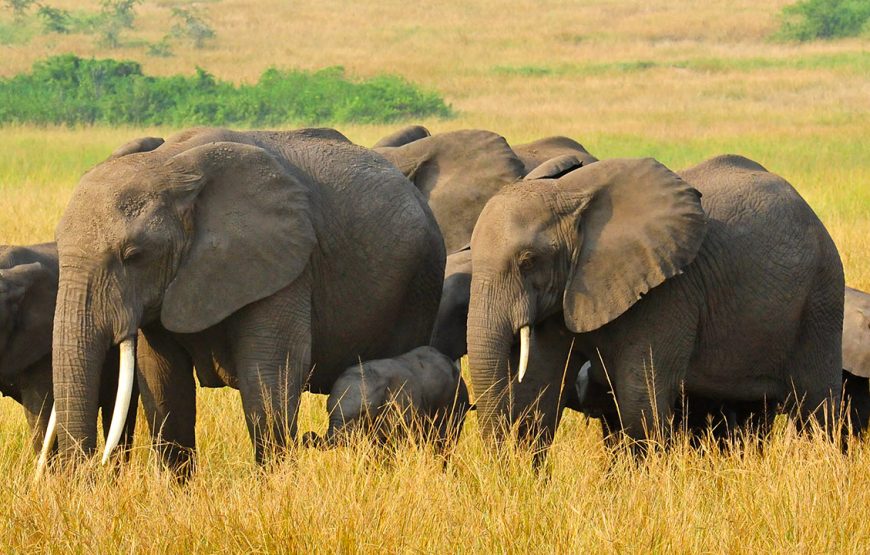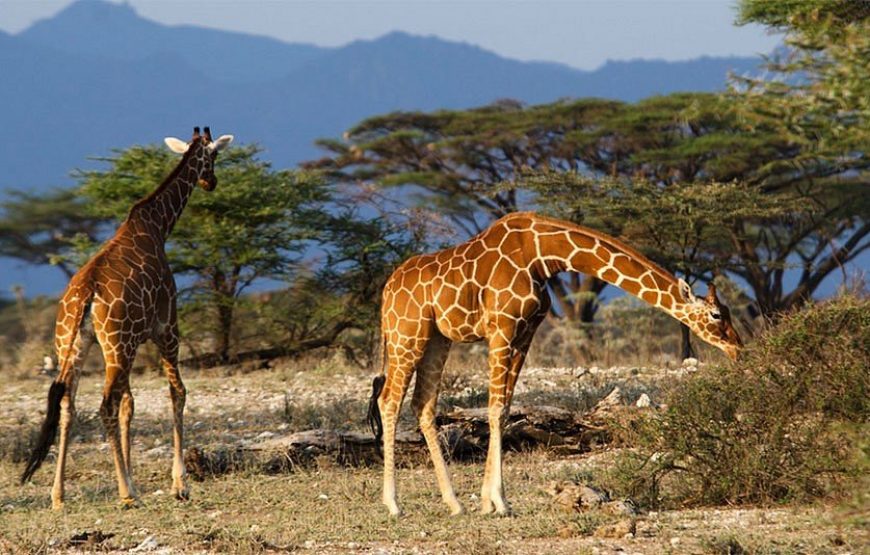from 0 review
4
Daily Tour
1 person
___




Queen Elizabeth National Park (QENP) is Uganda’s most visited national park, renowned for its diverse wildlife, scenic landscapes, and rich cultural heritage. Established in 1952, it spans approximately 1,978 km² across the western districts of Kasese, Kamwenge, Rubirizi, and Rukungiri. The park is situated about 400 km southwest of Kampala, Uganda’s capital, and is accessible via road or domestic flights to Mweya, Kihihi, or Kasese airstrips .
QENP is a haven for wildlife enthusiasts, boasting over 95 mammal species and more than 600 bird species. Notable residents include African elephants, lions, buffaloes, hippos, Nile crocodiles, leopards, and chimpanzees. The Ishasha Sector is particularly famous for its tree-climbing lions, a rare behavior observed in this region .
1. Kazinga Channel Boat Safari
A highlight of any visit, the boat cruise along the Kazinga Channel offers close encounters with hippos, crocodiles, and a plethora of bird species, including pelicans and kingfishers .
2. Chimpanzee Tracking in Kyambura Gorge
Known as the “Valley of Apes,” Kyambura Gorge provides opportunities for guided treks to observe chimpanzees in their natural habitat, along with other primates and diverse birdlife .
3. Tree-Climbing Lions in Ishasha
The Ishasha Sector is renowned for its unique tree-climbing lions, offering a rare spectacle for visitors .
4. Bird Watching
With over 600 bird species, QENP is a birdwatcher’s paradise. Notable species include the shoebill stork, martial eagle, and various species of kingfishers and hornbills .
5. Nature Walks and Forest Hikes
Guided walks through Maramagambo Forest and along the Mweya Peninsula offer insights into the park’s flora and fauna, including bat caves and scenic crater lakes .
QENP offers a range of accommodations to suit various preferences and budgets:
While Queen Elizabeth National Park is generally considered safe for tourists, it’s important to remain vigilant. In 2019, an American tourist and her guide were kidnapped in the park, highlighting the need for caution, especially near the border areas with the Democratic Republic of Congo .
The dry seasons, from June to September and December to February, are ideal for wildlife viewing, as animals congregate around water sources. However, the wet seasons offer lush landscapes and fewer tourists, providing a different but equally rewarding experience.
For more information or to plan your visit, consider exploring or consulting with local tour operators.
Leave a review